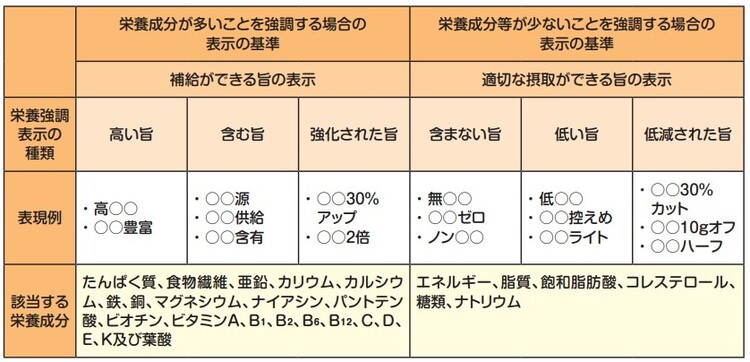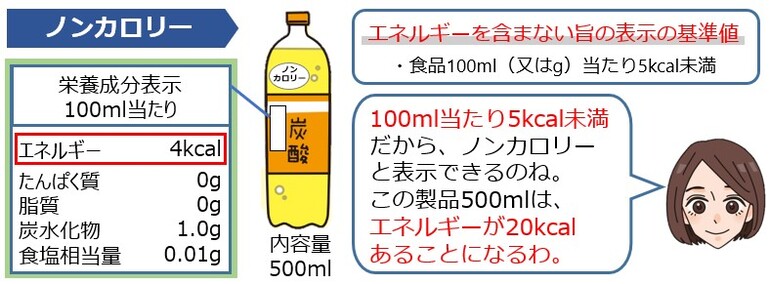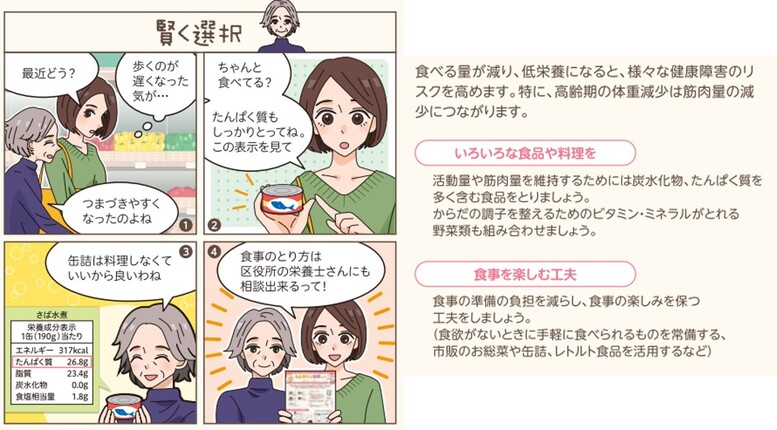- Yokohama-shi Top Page
- Health, Medical Care and Welfare
- Health and Medical Care
- Food safety
- Food Safety Yokohama WEB
- Thing about food labeling
- Consumer Information (Nutrient Labeling)
Here's the text.
Consumer Information (Nutrient Labeling)
Have you ever seen food labels? Food labels contain a lot of important information about food. The "nutrition ingredient labeling" can know the amount of nutrients contained in food and is useful for health promotion. Let's take advantage of nutrition labeling when choosing food!
Last update date April 17, 2024
Food display quiz-Nutrition emphasis display ~ [Limited for a limited time! ]
Yokohama City School Lunch Standard Menu Schedule (March 2024 issue) publication

Quiz①
Is there a numerical standard for a lot of calcium?
Answers①
Oh
Commentary①
Nutrition highlight indicates that the content of the target nutritional component is higher or less than a certain standard.
If calcium is higher than the standard value, it can be displayed as "rich calcium".

In addition, there are two types of molecules.
There are indication standards when emphasizing that there are many nutrients, and indication standards when emphasizing that there are few nutrients, etc. Each has a numerical standard.

(Source: "Would you like to use nutrition labeling?") Consumer Affairs Agency leaflet (outside site))
Quiz②
Does non-calorie mean 0 kilocalories?
Answers②
×
Commentary②
It is not necessarily 0 kilocalories.
If the energy value is less than the reference value, "non-calorie" can be displayed.

Contents
①Check out the salt equivalent to managing hypertension!
②Let's think about a well-balanced menu even for ready-made meals such as side dishes!
③Let's see how much energy is!
④Are health foods to supplement your diet?
⑤Prevention of malnutrition in the elderly
⑥Make use of nutritional highlights such as "Plenty of XX" and "○% cut".
Click here for advertising materials related to nutrition labeling
Other food labeling
Health promotion using nutrient ingredients
Let's take a look at how the Hamako family uses food labeling.
Hamako family

①Check the salt equivalent to the control of hypertension.
About salt equivalent
Salt is composed of sodium and chlorine. In the nutrition ingredient label, the amount of sodium in food is converted to the amount of salt in the formula of "sodium (mg) x 2.54 / 1000 = salt equivalent (g)".
Sodium is an essential mineral that regulates the body's osmotic pressure and maintains its vital function, but excessive intake can cause diseases such as high blood pressure and stomach cancer.
②Let's think about a well-balanced menu even for ready meals such as side dishes.
Protein
Protein is a major element that constitutes the tissue of the human body, such as the skeleton and muscles of the human body, and also performs various functions such as adjusting metabolism as a material for enzymes and hormones, and is essential for maintaining life functions and physical activity. It is abundant in meat, fish, eggs, soy products, milk and dairy products, etc.
Lipids
While lipids are an essential energy source for the maintenance of the cell membrane, taking too much increases the risk of obesity and heart disease. It is abundant in fatty meat, oil, margarine, butter, fried foods, snack sweets, and Western confectionery that use a lot of oil.
Carbohydrates
The most important role of carbohydrates is its function as an energy source. Carbohydrates are divided into carbohydrates and dietary fiber, and carbohydrates become glucose when decomposed in the body. Because tissues such as the brain and nerve tissue usually only glucose can be used as an energy source, carbohydrate is an important tissue. However, if you take too much, it turns into fat in the body and cause obesity. It is contained in rice, bread, noodles, potatoes, sugar and confectionery.
③Let's see how much energy is.
Energy is used for the maintenance of life functions and physical activity. When energy intake and consumption are equal, there is no change in weight. To maintain and improve health and lifestyle-related diseases prevention, it is important to balance intake and consumption to maintain the desired BMI.
What is BMI?
BMI = Weight (kg) ÷ height (m) ÷ height (m)
Target BMI
18 to 49 years old
18.5~24.9 kg /㎡
50-64 years old
20.0~24.9 kg /㎡
65 years old or older
21.5~24.9 kg /㎡
Take the amount of energy you need for a day referring to the table below. Let's use about one-third of the day per meal.

④Health foods are intended to supplement diet
What we take from the mouth is divided into food and pharmaceuticals.
Tablets and capsules health foods look like medicines, but they are "foods" and have no effect to cure or prevent diseases.
Health foods include health-function foods that can indicate functionality, etc. based on the national system, and other health foods.
The basics of maintaining and improving health are "nutrient-balanced diet, moderate exercise, and sufficient rest."
When using health foods
◆Check the indication of the recommended intake per day, precautions, etc.
◆If you are taking medication, consult your doctor or pharmacist.
◆Don't try to solve bias in meals and disruptions in life with health foods easily, but use them as supplementary ones.

⑤Prevention of malnutrition in the elderly

⑥Make use of nutritional highlights such as "Plenty of XX" and "○% cut".

Advertising materials related to nutrition labeling
Let's make use of food labeling (PDF: 5,918KB)
The Consumer Affairs Agency's web page (outside site) also contains information on health promotion utilizing nutritional components.
Other food labeling
Please refer to the Consumer Information (General Food Labeling).
In order to open PDF files, you may need a separate PDF reader.
If you do not have it, you can download it free of charge from Adobe.
![]() To download Adobe Acrobat Reader DC
To download Adobe Acrobat Reader DC
For inquiries to this page
Food hygiene section, Medical Care Bureau Health and Safety Department
Phone: 045-671-3378
Phone: 045-671-3378
Fax: 045-550-3587
Email address: ir-syokuhineisei@city.yokohama.jp
Page ID: 675-220-160







